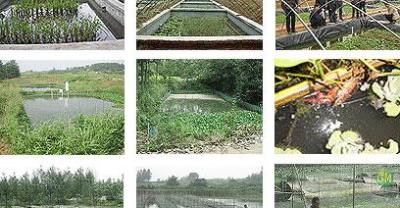How to feed water for breeding bees
Bees must collect water to maintain various physiological activities in the body, such as food decomposition, absorption, transportation, excretion of metabolites, and at the same time, water is needed to feed larvae, dissolve honey with high concentration, maintain appropriate temperature in the nest, and lower the nest temperature in hot days. The amount of water needed by a swarm of bees is related to the temperature and humidity of the air outside the hive, the population potential and the number of worms. In order to maintain life and adjust the temperature and humidity of the hive, a normal colony needs to collect 200-300 grams of water every day, especially when the area of the insect spleen in the nest is large and the season of high temperature requires more water. The water mainly comes from the water in the nectar and the water collected by some bees. One bee collects water 50 times per mouth, about 25 mg each time, and 400 water bees can extract up to 0.5 kg of water per day. When the temperature is low in early spring, some bees come out of the nest to collect water and some of them freeze and cannot return to their nests. When there is a shortage of water during transit and overwintering, bees will be restless, leading to tractors, premature senility and death. Jujube flowering period lack of water, there will be wing curling disease and so on. Therefore, attention should be paid to water feeding in daily management. The main methods of water feeding are as follows.
Feeding water in the box has more spleen in the nest in spring and needs more water. Generally combined with reward feeding, the feeder is filled with sugar at night and water in the door.
Nest door water feeding places a bottle or plastic bag holding water on the front of the hive and on the pedal of the nest door (fastening the mouth of the bag). Use gauze to attract water from the bottle to 1 cm inside the nest door, and bees can absorb water from the wet cloth.
The water outside the box is fed with wooden pots, porcelain pots, tile pots, etc. to dig holes on the ground, and the pit is covered with a layer of plastic film to hold water for bees to collect. Pay attention to the surface of the water should put some dry sticks, thin wood chips and so on, so as not to drown the water bees.
Feeding propolis water propolis is a natural substance collected by bees to return to their nests for disease prevention and treatment, containing more than 300 ingredients. Honeybees live and reproduce in hives with high temperature (34 ℃-35 ℃) and high humidity (75% relative humidity). The pollen, royal jelly and honey in the hive can be kept fresh, all on propolis. In production, bee colonies with more glue collection rarely suffer from creeping bee disease and chalk disease. You can feed propolis when you feed water in spring. The preparation method is as follows: 40 grams of original propolis collected by the beehive, mashed and added 95% ethanol (edible ethanol) 100 ml, shake fully once a day, filter impurities with gauze after 9-10 days, and add 5 ml propolis liquid to 100 ml water. Combined with water feeding for 3 days, it can not only prevent disease, but also stimulate bees to get excited and collect more propolis and powdered honey.
PS: welcome to follow the first national goose raising industry public welfare platform goose raising forum Wechat official account: yelt123
- Prev

The breeding method and matters needing attention of Bai Qianlian, hanging upside down the seedlings of Golden Bell and Bailian.
1. Light white layer itself is more like the sun, so we usually have to raise it in the sunshine all day, can not let it often in the bad light.
- Next

Mysteries of dissolved oxygen in aquaculture
During the culture of Penaeus vannamei, the chemical indexes and physical properties of water quality usually use dissolved oxygen, pH value, ammonia nitrogen, hydrogen sulfide, nitrite, salinity and water.
Related
- On the eggshell is a badge full of pride. British Poultry Egg Market and Consumer observation
- British study: 72% of Britons are willing to buy native eggs raised by insects
- Guidelines for friendly egg production revised the increase of space in chicken sheds can not be forced to change feathers and lay eggs.
- Risk of delay in customs clearance Australia suspends lobster exports to China
- Pig semen-the Vector of virus Transmission (4)
- Pig semen-the Vector of virus Transmission (3)
- Five common causes of difficult control of classical swine fever in clinic and their countermeasures
- Foot-and-mouth disease is the most effective way to prevent it!
- PED is the number one killer of piglets and has to be guarded against in autumn and winter.
- What is "yellow fat pig"? Have you ever heard the pig collector talk about "yellow fat pig"?

